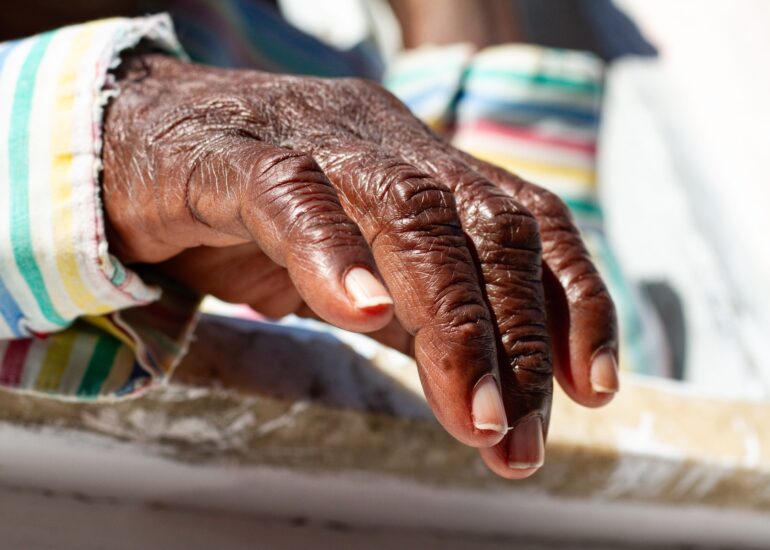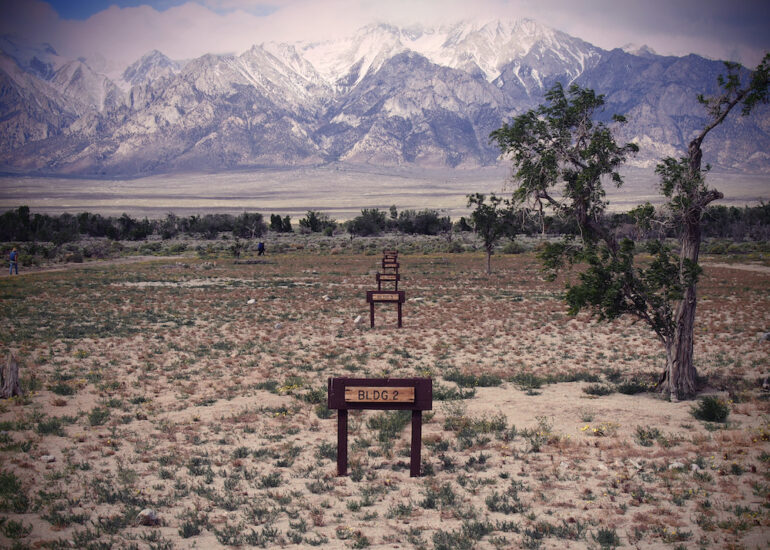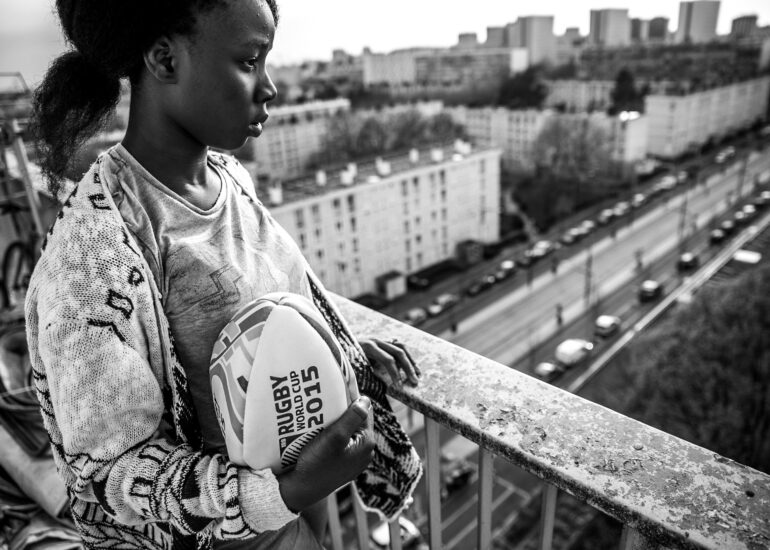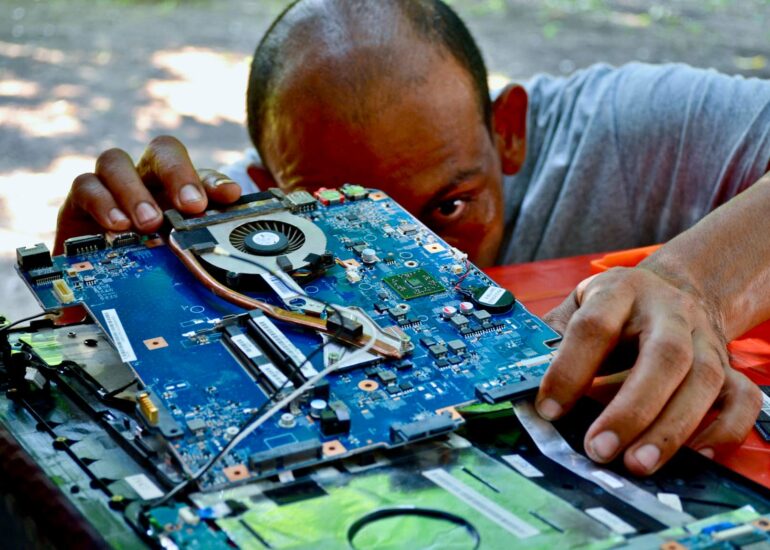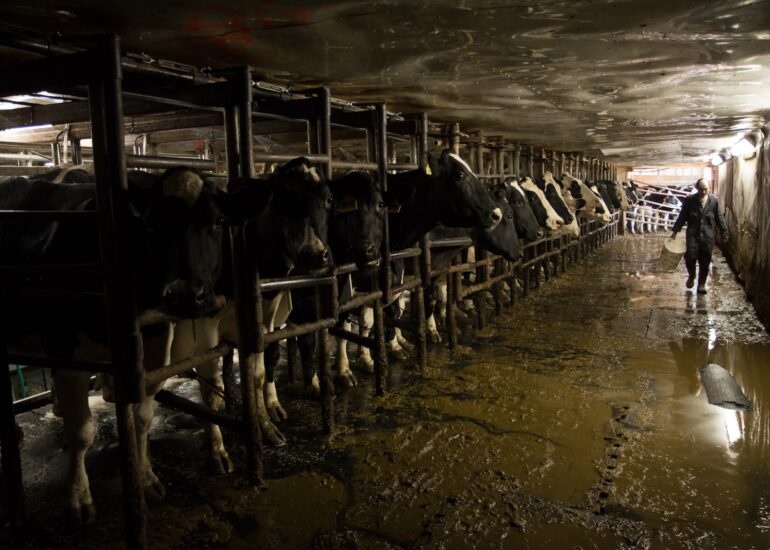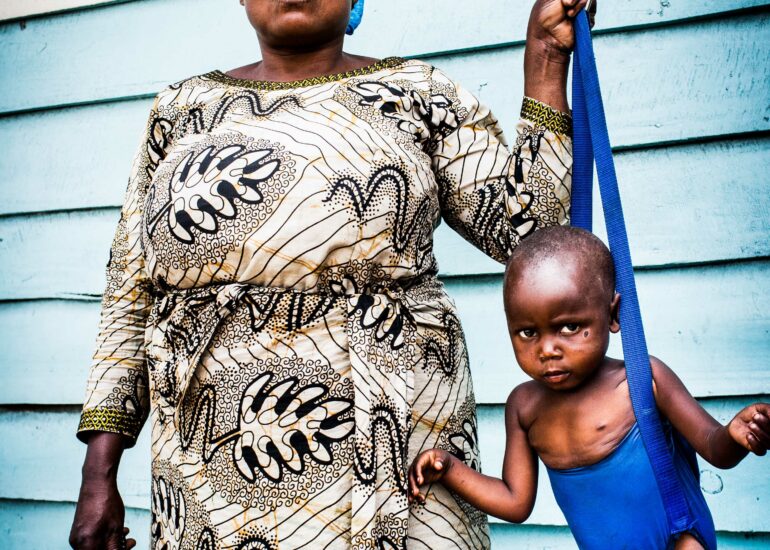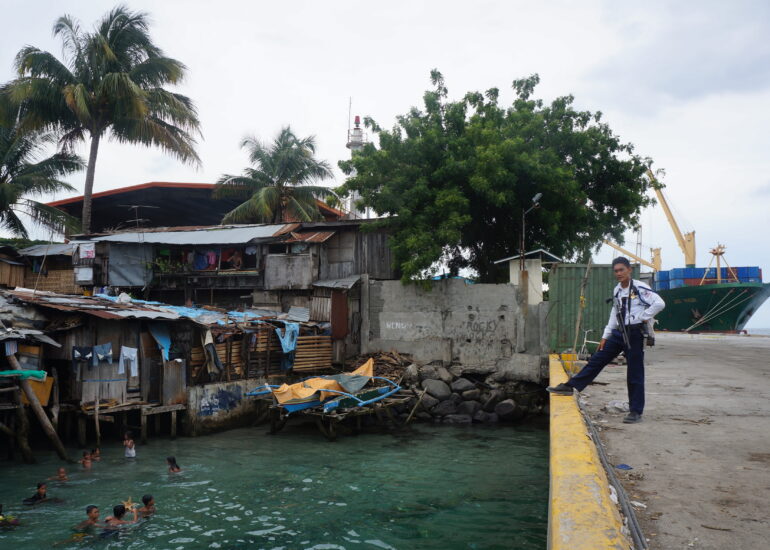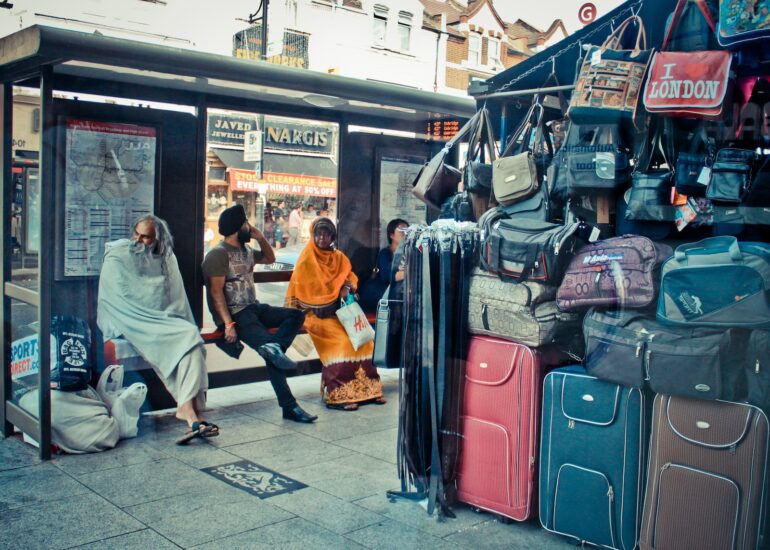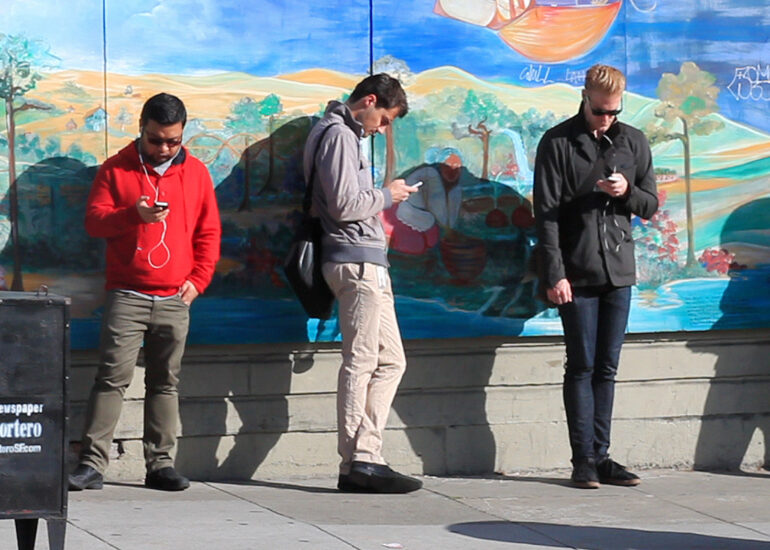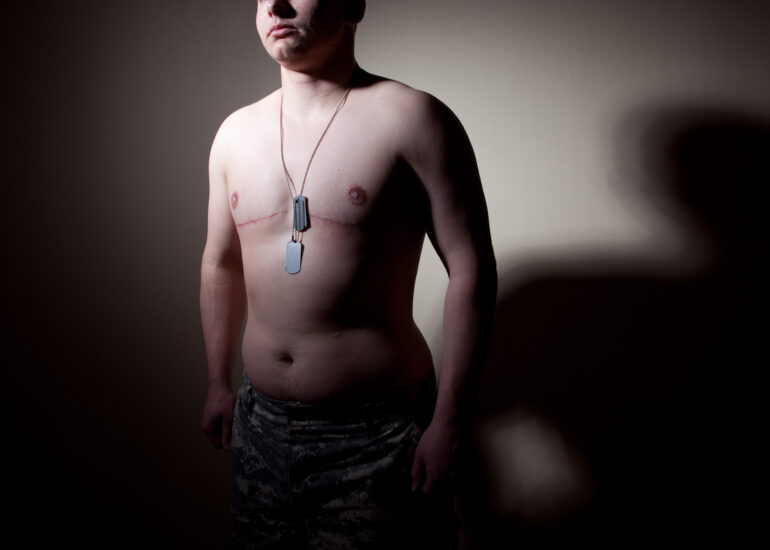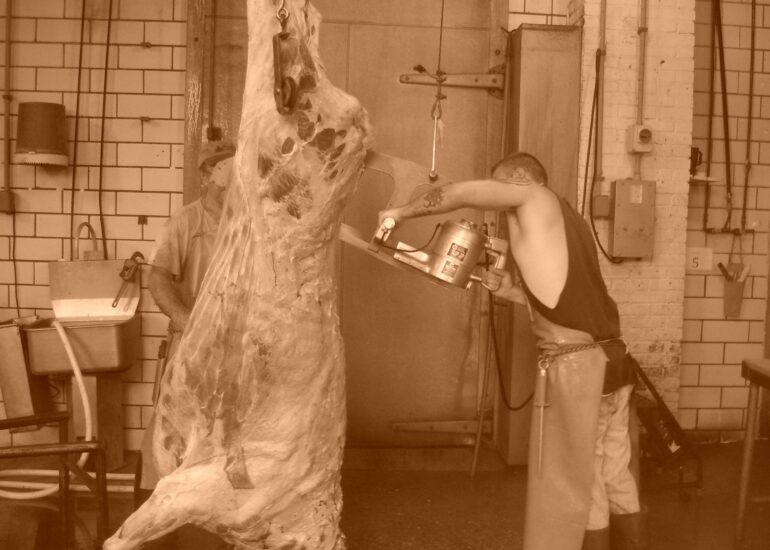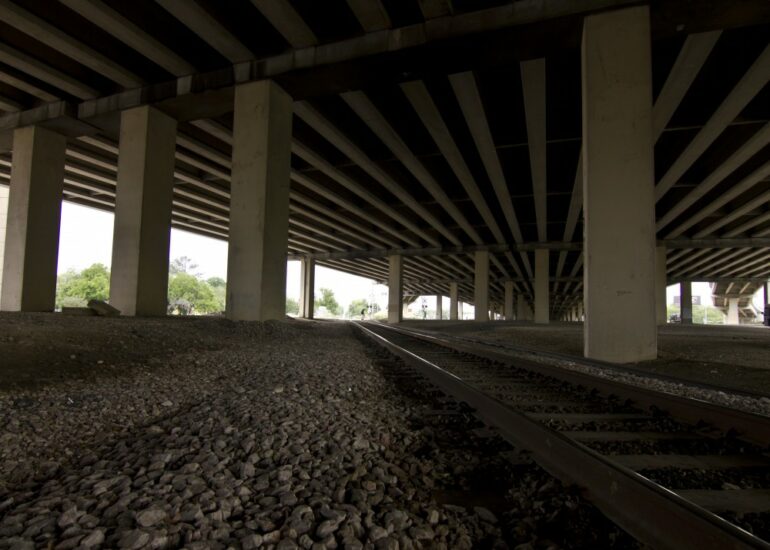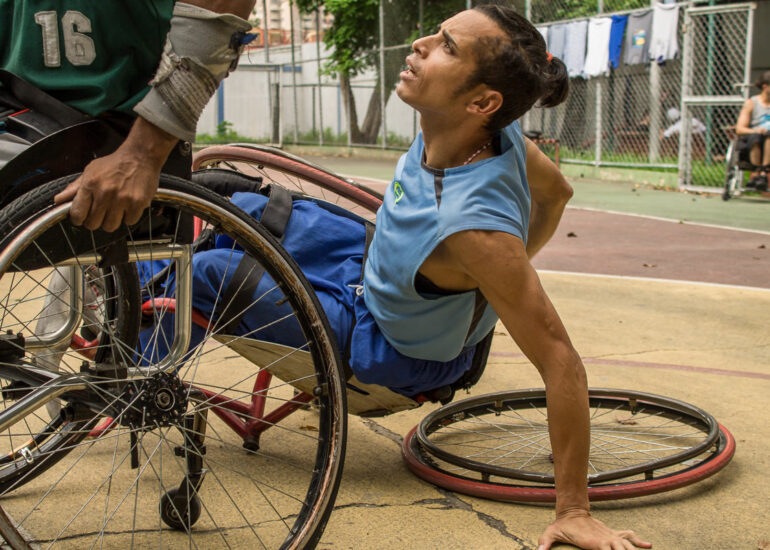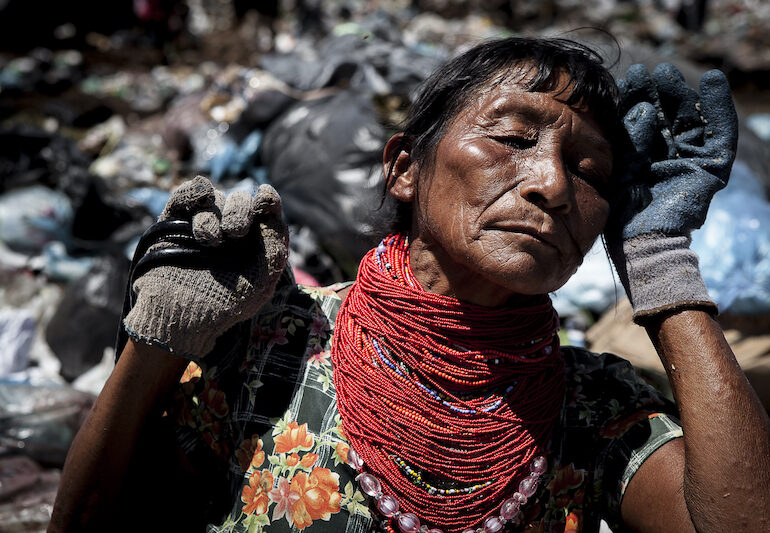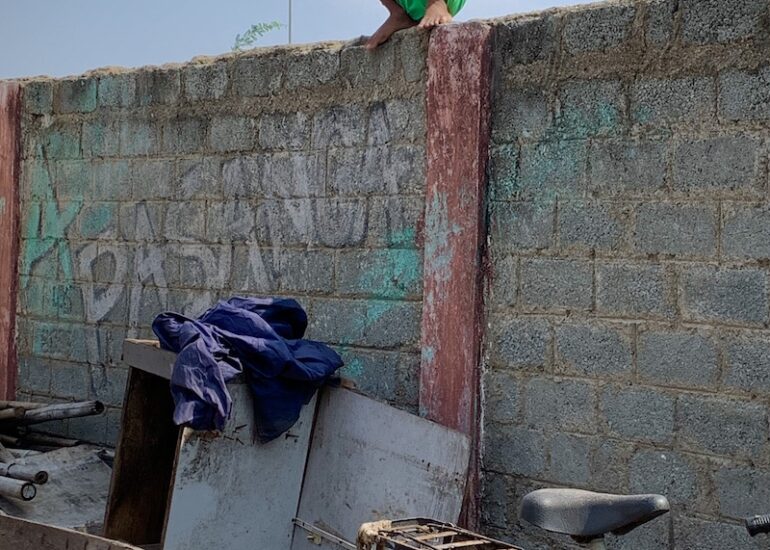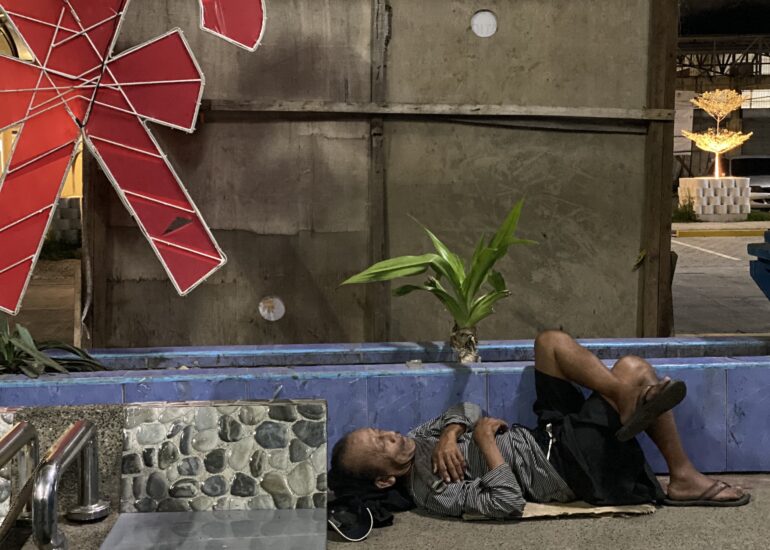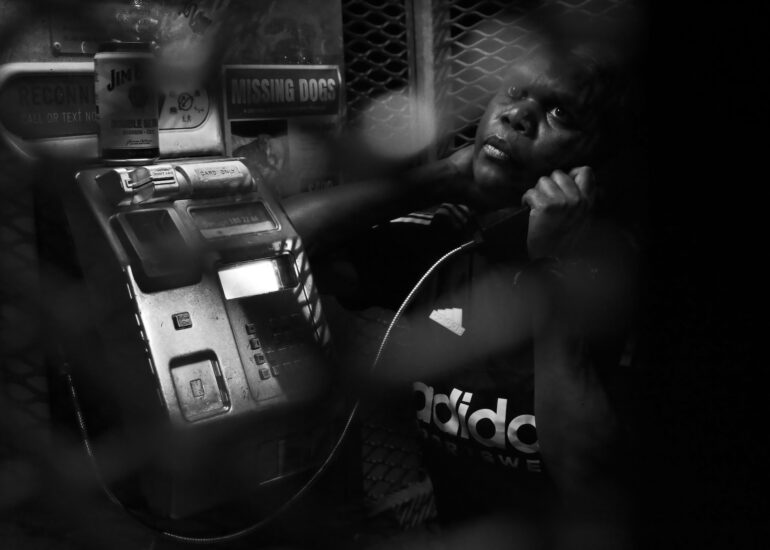Displaced in Plain Sight: The Silent Testimony of Urban Inequality (2025 Third Prize)
2025 Third prize winner
Displaced in Plain Sight: The Silent Testimony of Urban Inequality (2025 Third Prize)
Photo Essay
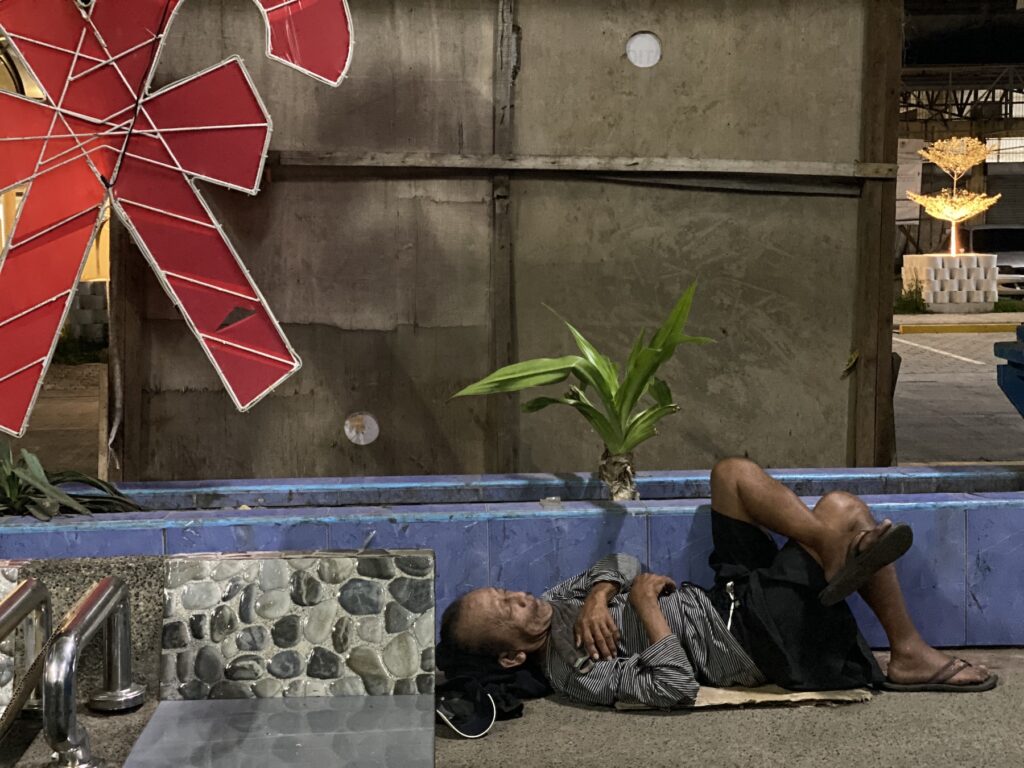
The image captures a man sleeping on a piece of cardboard, his body positioned against the cold, hard surface of an urban structure. Nearby, decorative lights and neatly arranged plants create an illusion of vibrancy and order. This unambiguous juxtaposition of human vulnerability against urban aesthetics serves as a powerful lens through which to analyze the layered realities of urban inequality.
At the core of this sociological analysis is the concept of spatial exclusion. Urban spaces are designed to reflect economic progress and identity, yet they simultaneously operate as mechanisms of social control, defining who belongs and who does not. The man’s presence in this space is a form of displacement rather than belonging. His body disrupts the intended use of the area, challenging the normative expectations of public decorum and consumption.
Drawing from Henri Lefebvre’s The Production of Space, we understand that space is not merely a passive backdrop but an active product of social relations. Public spaces are commodified and aestheticized to serve capitalist interests, marginalizing those who cannot participate in the economy as consumers. The decorative elements in the photo are not neutral; they signify an attempt to mask the structural inequalities embedded within the city. The festive lights and orderly plants contrast sharply with the man’s prone figure, making his displacement more visible precisely because of the surrounding attempts to obscure such realities.
Erving Goffman’s theory of stigmatization is evident in how society perceives individuals like the man in the image. His homelessness is not just a condition but a social identity marked by stigma, rendering him invisible despite his physical presence. This phenomenon, described as social invisibility, focuses on how urban dwellers learn to overlook the homeless, treating them as part of the scenery rather than as individuals with narratives and rights.
The photo can be analyzed through the lens of structural violence, a concept introduced by Johan Galtung, which highlights how social structures systematically disadvantage individuals by preventing them from meeting their basic needs. The man’s situation is not an isolated incident or the result of individual failure. Instead, it reflects the swelling impact of intersecting systems of inequality. His homelessness symbolizes the failures of economic structures that prioritize profit over people, resulting in economic insecurity where stable employment and fair wages are inaccessible to many. Moreover, the lack of adequate social safety nets—such as comprehensive healthcare, unemployment support, and mental health services—demonstrates how public institutions fail to protect society’s most marginalized.
This image is more than a picture of urban life; it is a silent testimony to the unescapable inequalities that define modern cities. It forces us to confront the uncomfortable realities of spatial injustice, the commodification of public spaces, and the lived experiences of those displaced within them. The man’s body, though still and silent, speaks volumes about the contradictions and failures of urban societies to address the needs of their most vulnerable population.
Commentary on Rachel Tanur’s Works: Drag Queen 1
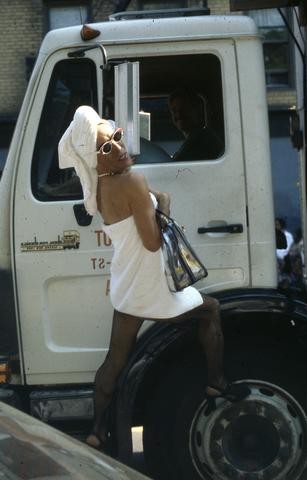
This photograph captures more than just a playful pose; it represents an act of disobedience against the subtle yet universal mechanisms of societal control. The subject, draped in a towel with a towel wrapped around their head, strikes a confident, exaggerated stance beside a truck, challenging conventional expectations of gender, decorum, and public presentation. This image invites analysis through Michel Foucault’s concepts of power, normalization, and disciplinary mechanisms that shape individual behavior and identity.
Foucault theorizes that power is not solely repressive or centralized but is diffuse, surrounded in everyday practices and social norms. Power operates through what he terms “disciplinary power,” which faintly molds individuals to conform to established norms (Taylor, 2014). This process, known as normalization, dictates what is considered acceptable or deviant, influencing everything from body presentation to public behavior. In this context, the subject’s flamboyant display becomes a form of resistance—a refusal to obey to the invisible rules that govern public spaces and gender expression.
The body, as Foucault suggests, is a primary site where power is inscribed and contested. Here, the subject uses their body as a canvas of rebellion, disrupting the conventional flow of urban life with a performance that demands attention. The exaggerated femininity, the confident posture, and the unapologetic presence in a traditionally masculine space (beside a large truck) destabilize normative gender roles and question societal expectations. This act exposes the subjective nature of these norms, revealing how they are constructed rather than inherent.
Furthermore, the image underlines the role of visibility in resistance. The subject’s public display confronts the societal tendency to render non-conforming identities invisible. Through occupying space boldly and unapologetically, they assert their right to exist outside the boundaries of normalized behavior. This act of “being seen” is radical in itself, challenging the disciplinary gaze that seeks to regulate bodies and identities through shame, exclusion, or ridicule (Binder, 2023).
This photograph is a testament to the power of individual agency within oppressive structures. It proves how everyday acts—a pose, a look, a presence—can disrupt the understated forces that seek to discipline and normalize. The subject does not just occupy space; they reclaim it, transforming an ordinary urban setting into a stage for radical self-expression and resistance.
- Taylor, D. (2014). Michel Foucault: Key Concepts. Routledge.
- Binder, K. (2023). Body Normativity and The Hyper (In) Visibility of Abject Bodies Living with Oppression in the Body Liberation Movement.
Recently in Portfolio

